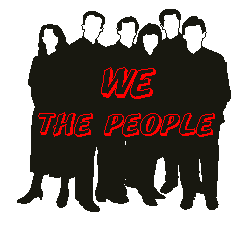 For the necessary changes in our industry to occur it will take the total effort of "We the People" to insure the transition is all that it can be. |
Ken Sinclair, As published in the |
AutomatedBuildings.com
|
[an error occurred while processing this directive] |
 For the necessary changes in our industry to occur it will take the total effort of "We the People" to insure the transition is all that it can be. |
Ken Sinclair, As published in the |
I am often asked, "Who is driving the web integration that is presently revolutionizing our industry?" The answer is "We the people of the large building automation industry". That includes you! There are no secret organizations or committees spearheading the revolution, it is simply happening. We the messengers are only reporting and linking to existing web integration information.
|
[an error occurred while processing this directive] |
The August Issue of Engineered Systems supplement Web Based Facilities Operations Guide, Doing more with less by using Web-based anywhere information to amplify your existing building operational resources, highlighted examples of "We the people" in action.
Much work still needs to be done and in a stinging article on the AutomatedBuildings.com website called Moving Forward! Are We? Will We Soon, or Ever http://www.automatedbuildings.com/news/jul02/articles/htmn/htmn.htm Thomas Hartman, The Hartman Company,
Tom predicts a very strong movement to "occupant integrated" HVAC controls within the next decade. The article points out problems with our present growth. An extract from the article follows:
"But in light of new realities its probably time to question whether there may be more direct approaches to achieving comfort that is responsive to the myriad of external factors that have developed along with this era of digital controls. Modeling comfort systems after Internet technologies makes a lot of sense. Consider that the independent nature of present method of building controls does not ensure every zone in the building is satisfied even when substantial extra system capacity is available. Nor do present building controls provide effective coordination to minimize the inherent energy waste of heating and cooling concurrently. Rather than solve this problem with more effective controls, the industry has tried to reduce it by mandating certain equipment configurations that make it more difficult to apply concurrent heating and cooling, but can also reduce the system's flexibility to keep everyone comfortable. Finally, and most disappointing, is the fact that while an increasing number of the occupants served by our industry's comfort systems are connected to wide area networks, including the Internet, almost none of them can yet connect in any way to their local comfort system to request changes in thermal or lighting levels in the space they occupy.
This disparity between what general computing systems can accommodate and what is reasonably possible by building controls is increasing, and will at some time no longer be sustainable. Building occupants will demand connection to their comfort systems so that they can set thermal and lighting preferences just as they set preferences for much of the other equipment and systems with which they work every day. From a worker performance perspective it is extremely wasteful that we are not more aggressive in pursuing such individual comfort control connections. From an occupant satisfaction/retention perspective, it is inevitable that we will soon be required to do so." I predict a very strong movement to "occupant integrated" HVAC controls within the next decade. My prediction is that by the second decade of this century, most class "A" office spaces will be required to offer individual control of thermal and lighting levels. This integration will most likely be Internet based. Also in the same time span, I see much building operations and maintenance will also become Internet based with fewer operations personnel in individual buildings. Such personnel will be come more specialized and perform a smaller scope of services in many more buildings.
[an error occurred while processing this directive] Hartman has a follow up series called "Strengthening the Weak Links" in which he illustrates examples of hindrances in our industry to moving forward and accepting newer technologies, and suggests ways we might work together to improve the various problems.
Other articles on our web site have we the people talking about
Integrated Facilities Management Is Key Successful facilities management entails taking a holistic, performance-based approach to building automation and tracking key performance metrics in real time. ARC Advisory Group
A key factor to optimizing operations, which is often overlooked, is the strategic management of brick and mortar assets. By strategically leveraging brick and mortar assets through comprehensive facilities management, companies can save millions of dollars in energy costs, increase productivity and employee morale, and attract high quality recruits. When managed strategically, brick and mortar assets can become tools, which support the company's strategic goals, as opposed to costs, which drag profits down.
For the necessary changes in our industry to occur it will take the total effort of "We the People" to insure the transition is all that it can be. It is important that you understand that you are an important part of the "We the People" and provide your valuable input.
[an error occurred while processing this directive]
[Click Banner To Learn More]
[Home Page] [The Automator] [About] [Subscribe ] [Contact Us]